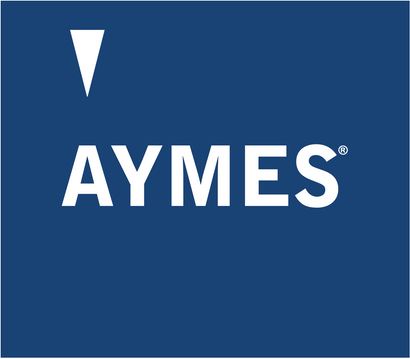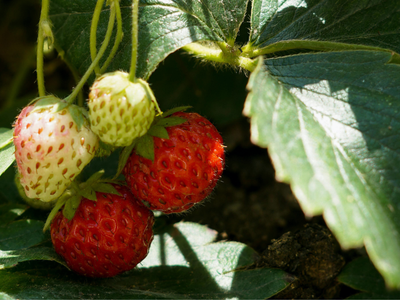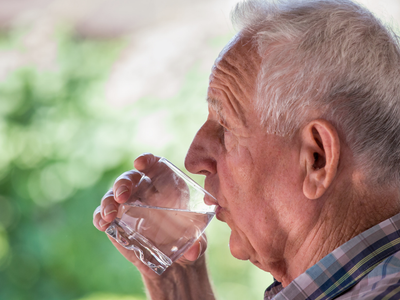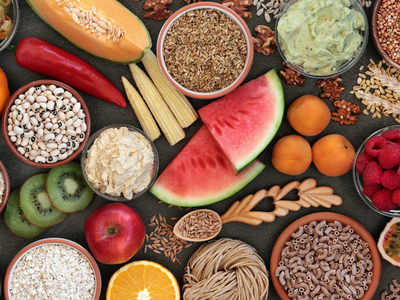Your Cart is Empty
Reviewed by Harriet Smith, RD
The Polish community is the largest group of non-British nationals living in the United Kingdom (UK) (1), having arrived in two main waves of migration. The first wave was driven by political reasons during the Second World War and the second wave by economic opportunity after Poland joined the EU in 2004 (2). As the economic situation in Poland improves and the political climate in the UK changes, the number of Poles in the UK has reduced slightly (3). However, the Polish population in the UK remains at 900,000 people.
With limited data available, the level of malnutrition specifically amongst the Polish population in the UK is largely unknown. However, according to BAPEN, malnutrition affects over 3 million people in the UK (4). Therefore, it is reasonable to expect a significant presentation of malnutrition amongst the Polish population.
Background to Polish Diets
Agriculture is a large part of the Polish economy. This translates directly to the Polish diet, with cereal grains such as wheat, rye, barley and buckwheat making up the staples of the diet. Equally popular are other products such as potatoes, cucumbers, mushrooms, cabbage and beetroots. Boiled potatoes are the most popular side dish found at a Polish meal.
A loaf of sourdough bread is an essential item in the Polish kitchen with open sandwiches popular at any time of the day. Poles in the UK are often missing the taste of traditionally baked Polish sourdough rye bread, which can be difficult to find here. For this reason, Polish shops (Polski Sklep) typically have a bakery section offering fresh bread.
Pickled foods are also a common part of the Polish diet with gherkins, pickled mushrooms and sauerkraut a regular feature. Cold meats and sausages are also extremely popular, especially the smoked varieties. These are most often eaten for breakfast, in sandwiches or used as a base ingredient for stews.
Polish migration has been accompanied with a rapid increase in the number of Polish shops and delis in the UK. This highlights the importance of traditional food amongst Polish people. Furthermore, these shops are often not just a place to get food from, but also an information centre, shipping service and essentially a place to meet the wider Polish community (5).
It is important to note that although Poles love the taste of their traditional food and value having access to Polish ingredients, they like to experience different foods and are open to trying different cuisines. This is especially true amongst the younger generations; general speaking, they don’t strictly follow a Polish diet and will happily try other cuisines available.
Food and Religious Celebrations
Religion has a significant impact on Polish food traditions. It is estimated around 86% of Polish nationals are Roman Catholic with strong feasting rituals (6). The two most important religious celebrations are Christmas and Easter.
The traditional Christmas Eve (Wigilia) dinner consists of 12 dishes, none of which consist of meat. The main dish is carp (fish) served with forest mushrooms. Other dishes include borscht (sour soup) served with ravioli or a mushroom soup as a starter as well as polish dumplings (pierogi), sauerkraut, a variety of herring dishes, noodles with poppy seeds and honey and braised sauerkraut. You can always be sure of a selection of cookies and cakes, with the most popular being gingerbread and a poppy seed cake.
On Easter Sunday, the breakfast table is a real feast for meat lovers with ham, sausages, roast meats served with horseradish. Boiled eggs, pate, vegetable salad and bread are also present. Again, you can be sure of a selection of Polish cakes with the most popular being rich pound cake (babka), Polish shortbread (Mazurek) and cheesecake (7).
Nutrition Support Challenges with the Polish Population
There is no data available about the health profile of Poles living in the UK. However, there is likely to be a similar trend to that occurring amongst the polish population living in Poland. Cardiovascular diseases such as heart disease and stroke remain the most common causes of death followed by lung cancer and pneumonia (8). Public health guidance emphasises the importance of following a heart-healthy diet and lifestyle. For that reason, some people might be reluctant to follow nutrition support advice as it goes against typical ‘healthy eating’ principles.
Secondly, some Poles might have a limited knowledge of the English language. Therefore, it would be worth assessing the need for a translator before dietetic appointments or asking if they can bring someone along to translate for them. This is to minimize language barriers in order to provide the highest quality care (9).
Traditional Polish dishes tend to be very time-consuming to prepare. Therefore batch cooking and freezing are recommended to save time and energy. It might be useful to suggest that patients/carers/relatives purchase pre-prepared snacks and nourishing drink options from local Polish shops. Nowadays, most of the well-known supermarket chains have a Polish food section. Some supermarkets even have Polish bakery products which can be bought online for convenience.
Nutrition Support - Food First ideas:
In order to prevent and treat malnutrition, the first steps usually focus on dietary strategies (often referred to as a ‘Food First’ approach). This involves encouraging patients to eat little and often, offering nourishing snacks and drinks and fortifying dishes. Food fortification increases the number of calories and protein consumed without increasing the volume of the food eaten. It is important that dietitians tailor their ‘food first’ advice for patients, taking into consideration cultural practices and religious considerations, as this may help to improve patient compliance.
Nourishing Snacks:
Sweet Options:
- Buns with a variety of fillings (drozdzowka)
- Doughnuts
- Semolina pudding with jam or confiture
- Variety of Polish pastries and biscuits
- Fried bread sprinkled with sugar or served with jam
- Baked rice with apples and cinnamon
- Apple pancakes with jam or icing sugar (racuchy)
- Pancakes with cottage cheese and fruits or jam
- Halva (traditional fudge-like sweet made from sesame)
Savoury Options:
- Pretzels (paluszki)
- Kabanosy (dry and smoked sausages)
- Mixed nuts and seeds
- Potato pancakes
- Cottage cheese
Nourishing Drinks:
- Roasted grain drink (inka)
- Cocoa drink
- Buttermilk (maslanka)
- Kefir (fermented milk drink)
- Drinking yoghurts
- Instant soups
Food Fortification:
- Fortify full fat milk by adding four tablespoons of skimmed milk powder to one pint of milk. This milk can then be used to make up cocoa drinks or roasted grain drinks. It can also be used in semolina pudding or consumed with cereals
- Add extra cream to soups, stews, mashed potatoes
- Add extra butter on sandwiches, to mashed potatoes and on vegetable dishes
- Use a generous amount of jam or honey on pancakes, semolina and fried bread
- Add fruit syrup to tea
References
- ONS.GOV.UK. (2020). Population of the UK by country of birth and nationality. [online] Available at: https://www.ons.gov.uk/file?uri=%2fpeoplepopulationandcommunity%2fpopulationandmigration%2finternationalmigration%2fdatasets%2fpopulationoftheunitedkingdombycountryofbirthandnationality%2fjanuary2019todecember2019/populationbycountryofbirthandnationalityjan19todec1919052020143312.xls [Accessed 4th November 2020].
- Trevena, P. (2009) New Polish Migration to the UK. [online]. Available at: http://www.cpc.ac.uk/docs/2009_WP3_New_Polish_Migration_to_the_UK_Trevena.pdf [Accessed 4th November 2020].
- Hawkins O, Moses A. (2016) Polish population of the United Kingdom. House of Commons Library [online]. Available at: https://researchbriefings.files.parliament.uk/documents/CBP-7660/CBP-7660.pdf [Accessed 4th November 2020].
- BAPEN. (2018). Introduction To Malnutrition. [online] Available at: https://www.bapen.org.uk/malnutrition-undernutrition/introduction-to-malnutrition?start=4 [Accessed 4th November 2020].
- Rabikowska, M. (2010) The ritualisation of food, home and national identity among Polish migrants in London, Social Identities, 16: 3, 377-398 [online] Available at: https://www.tandfonline.com/doi/full/10.1080/13504630.2010.482432 [Accessed 3rd November 2020].
- Thaker A, Barton A. Multicultural handbook of Food, Nutrition and Dietetics. Chichester: Willey Blackwell; 2012.
- EACEA National Policies Platform (2019) Poland Population: Demographic Situation, Languages and Religions. [online] Available at: https://eacea.ec.europa.eu/national-policies/eurydice/content/population-demographic-situation-languages-and-religions-56_en [Accessed 3rd November 2020].
- OECD/European Observatory on Health Systems and Policies (2017), Poland: Country Health Profile 2017, State of Health in the EU. [online] Available at: https://www.euro.who.int/__data/assets/pdf_file/0006/355992/Health-Profile-Poland-Eng.pdf?ua=1 [Accessed 10th November 2020].
- Al Shamsi, H., Almutairi, A., Al Mashrafi, S. and Al Kalbani, T. (2020). Implications of Language Barriers for Healthcare: A Systematic Review. Oman Medical Journal [online] Available at: https://www.researchgate.net/publication/341206456_Implications_of_Language_Barriers_for_Healthcare_A_Systematic_Review [Accessed 10th November 2020].








